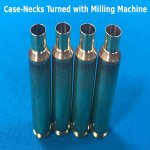Ive been doing quite a bit of research recently because I was recently gifted a new 6.5prc rifle with a wicked scope, and I feel the need to really make the gift worthwhile by ensuring I only load ammo worth shooting out of it.
In my research I've come to the conclusion I need to make additions and changes to my reloading game, these include: using dies with bushings, annealing, improved scale for powder accuracy. I've been doing a bit of reading on neck turning, and I think I should go down this road as well. I've been eyeing the sinclair 4000 model - Is there a different brand for neck turning that I should be looking at?
In addition to what I listed in terms of process, is there anything I'm missing that I should consider?
I've been reloading for about 9 months and I really just want to be able to improve my handloads to a point that I am extremely pleased with the results.
Thank you for your help!
Ian
In my research I've come to the conclusion I need to make additions and changes to my reloading game, these include: using dies with bushings, annealing, improved scale for powder accuracy. I've been doing a bit of reading on neck turning, and I think I should go down this road as well. I've been eyeing the sinclair 4000 model - Is there a different brand for neck turning that I should be looking at?
In addition to what I listed in terms of process, is there anything I'm missing that I should consider?
I've been reloading for about 9 months and I really just want to be able to improve my handloads to a point that I am extremely pleased with the results.
Thank you for your help!
Ian










































































